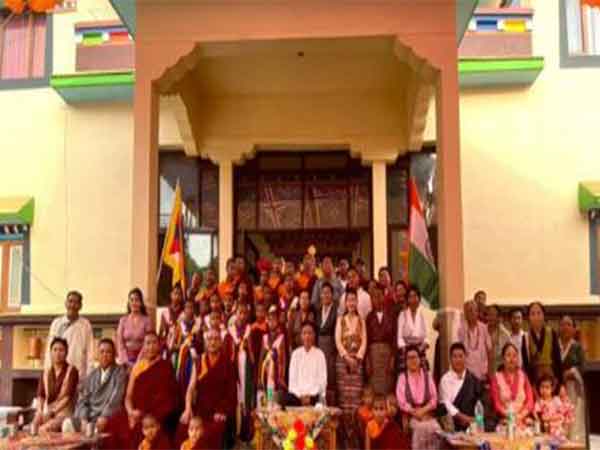Dharamshala (Himachal Pradesh) [India], April 21 (ANI): The President of the Tibetan Government in exile, Sikyong Penpa Tsering began his visit to the Kham Kathok Tibetan Settlement in Sataun on April 19, 2025, following his official engagements in Shimla, according to a report by the Central Tibetan Administration (CTA).
A public meeting was held after a tour of the Kathok Monastery, where Tibetan Settlement Officer (TSO) Ugyen Choedon presented a detailed report outlining the history and current initiatives of the Sataun settlement, as stated in the CTA report.
While acknowledging the very small size of the Kham Kathok settlement, Sikyong Penpa Tsering emphasised the importance of unity and mutual support within the community. He was quoted in the CTA report as saying, “Our generation exists because the older generation worked hard and contributed immensely,” adding, “The younger generation now will determine whether the future exists or not.”
Sikyong also highlighted the need to understand global political trends, particularly those that impact the future of Tibet. He reiterated the urgency of preserving Tibet’s unique religious traditions, cultural identity, and linguistic heritage – all of which remain under existential threat from the People’s Republic of China.
According to the CTA report, he said it is necessary to “step up efforts to teach Tibetan language to Tibetan children living in exile.”
Additionally, Sikyong provided updates on a major initiative from the Department of Religion and Culture: the development of a digital library dedicated to preserving and providing access to sacred monastic manuscripts. The CTA report noted that the project reflects the Central Tibetan Administration’s continued commitment to ensuring Tibet’s spiritual and cultural legacy is protected for future generations.
The Tibet-China conflict stems from the political status of Tibet and China’s rule over the region. Tibet, once an independent entity, was incorporated into China in 1951 following military occupation.
Since then, Tibetans – led by the Dalai Lama – have campaigned for greater autonomy and protection of their religious, cultural, and political rights.
China, however, considers Tibet an inseparable part of its territory, resulting in continued tensions and widespread concerns about cultural suppression. (ANI)
Disclaimer: This story is auto-generated from a syndicated feed of ANI; only the image & headline may have been reworked by News Services Division of World News Network Inc Ltd and Palghar News and Pune News and World News
HINDI, MARATHI, GUJARATI, TAMIL, TELUGU, BENGALI, KANNADA, ORIYA, PUNJABI, URDU, MALAYALAM
For more details and packages














